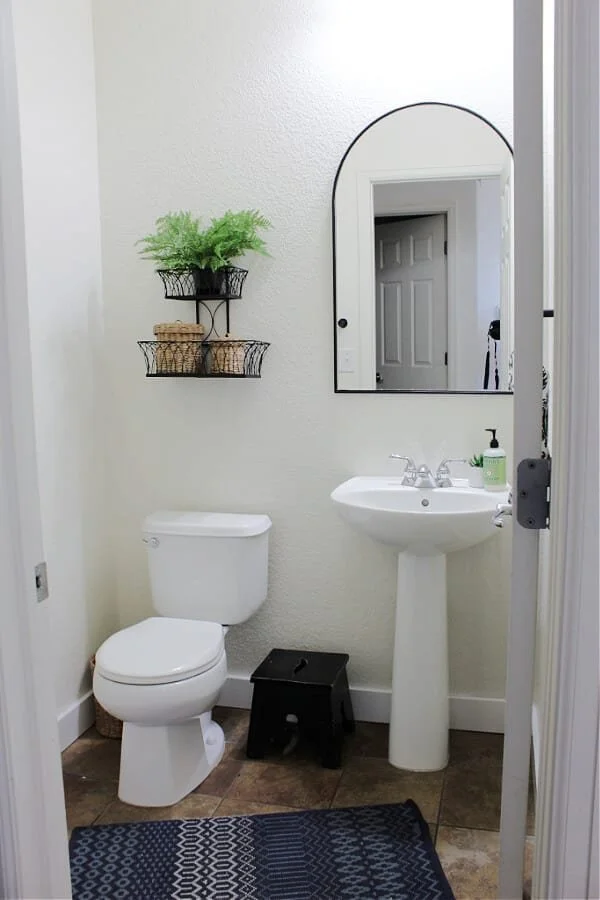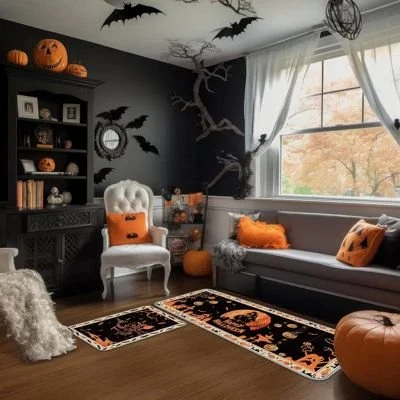Small Space Solutions: Furniture for Tiny Living Rooms
RH Business Marketing Solutions
Feeling jammed in your small living room? Maximizing a small living room without sacrificing style can feel like a balancing act. With the right small-space furniture solutions, you can create a cozy, functional, and visually appealing living area, even in the tightest quarters.
From multifunctional pieces to custom-built options, this guide walks you through strategies to maximize every square inch of your living room. By focusing on smart design choices and space-saving tips, you’ll discover how to make your tiny living room feel spacious and inviting. Let’s explore some of the best ways to transform your living room into a stylish and efficient haven.
Maximizing Functionality Without Sacrificing Style
For a small room, multifunctional furniture is key. These pieces serve multiple functions, saving space while keeping your living room organized and neat. For instance, a sleeper sofa can be used as a comfortable seat in the daytime, while at night, as a bed. On the other hand, a convertible coffee table can work both as an eating area and as a working place.
Opt for small living room furniture pieces that have hidden storage, such as an ottoman that actually contains a compartment inside or even a bed with drawers, to cut down on clutter and open up your living room.
Scale and Proportion: Choosing the Right-Sized Furniture
After nailing functionality, it's time to bring in the size factor. It's very crucial to choose furniture that's suitable for your space's dimensions.
Finding the Perfect Fit
Sofas: Less than 80 inches long work perfectly.
Coffee tables: Keep them under 30 inches wide for good flow.
Chairs: Use armless or sleek profiles.
Remember, lower-profile furniture means there's some room for more light and air to circulate, making it feel a lot larger.
Opt for Vertical Storage Solutions
For a small living room, the floor space is priceless. So why not go up? This kind of vertical storage solution makes full use of the available space by using the height of your room. Set up high bookshelves, floating shelves, or wall-mounted cabinets in which you can store your items without eating into the precious floor area.
Using the vertical space will cut down on clutter and open a room up. For example, placing a tall bookcase in one corner of the room frees up space in other parts for seating or other decorative pieces.
You can even display your beautiful decoration on open shelves and leave the floor open. Not only does it provide space, but it also shows the personal flair of the living room.
Incorporating Lightweight and Transparent Materials
The usage of heavy furniture makes a small room feel even smaller. Instead of heavy furniture, opt for lightweight, transparent materials like glass, acrylic, or open-framed pieces to create the illusion of openness and make the room feel lighter.
A perfect example would be things like glass-top coffee tables and chairs made of acrylic, which serve their purpose without visually burdening the room. Another similar technique involves using open-frame shelving, which can do more for a Better Home Inspection of your items but still let light through, making a space much more open.
Modular Furniture: Adaptability is Key
In tiny spaces, flexibility is essential, and modular furniture excels in this regard. These adjustable pieces ensure that your living space can vary with your needs.
Mix, Match, and Rearrange.
Sectional Sofas: Reconfigure to fit different layouts or events.
Stackable chairs: Packed away when not in use.
Nesting tables: Pull out for guests and fold away for everyday use.
Modular furniture helps you to make the most of your space by adapting to different activities without committing to a specific configuration.
Color Palettes and Lighting: Enhancing the Perception of Space
The right colors and lighting can dramatically affect how spacious your room feels. Let's explore how to use these elements to your advantage.
Brighten and Expand
Light, neutral colors: Make walls recede and rooms feel larger.
Mirrors: Reflect light and create the illusion of depth.
Layered lighting: Use a mix of ambient, task, and accent lighting to eliminate dark corners.
By strategically using color and light, you can create an airy atmosphere that feels much larger than its actual dimensions.
Hidden Storage Hacks to Maximize Space
With the visual elements of your room taken care of, let's address one of the greatest challenges in small rooms: storage. This cleverly hidden storage will maintain the neatness and mess-free nature of your living room.
Conceal and Reveal
Storage Ottoman: Great for storing blankets or magazines.
Coffee Table Drawers: Keep remotes and coasters out of sight.
Pull-Out Sofas: Tuck extra pillows or bed sheets inside.
These hidden storage options can reduce visible clutter, making your room appear more spacious and organized.
Investing in Custom Furniture for Unconventional Layouts
Some small living rooms have odd layouts, featuring strange corners, sloped ceilings, or even narrow areas. In those cases, custom furniture can be a lifesaver. Since custom pieces are made for your space, they are sure to fit while you make the most of every inch.
Consider built-in shelving for weird nooks or custom corner seating that snugly fits into the tight corners. By designing pieces specifically for your space, you'll create a functional layout without sacrificing style.
Though custom furniture may require a larger upfront investment, it can save space and create a cohesive, tailored look for your living room.
Conclusion: Small Space, Big Potential
Creating a functional and stylish small living room is all about smart choices. From multifunctional furniture to clever storage solutions, every decision can make a big impact. Remember, it's not just about fitting everything in - it's about creating a space that feels open, inviting, and uniquely yours. Ready to transform your tiny living room? Start by assessing your space and needs, then implement these tips one by one.
Frequently Asked Questions (FAQs)
1. What type of furniture works best in a small living room?
Opt for multifunctional and modular furniture. Pieces like sleeper sofas, convertible coffee tables, and nesting tables provide functionality without taking up unnecessary space.
2. How can I make my small living room feel larger?
Use light colors, mirrors, and transparent materials to create the illusion of more space. Avoid bulky furniture, and make sure your lighting enhances the room's openness.
3. Are sectionals a good choice for small living rooms?
Yes, but choose modular sectionals that allow you to reconfigure them based on your needs. Select a slim, low-profile design to avoid overwhelming the room.



















